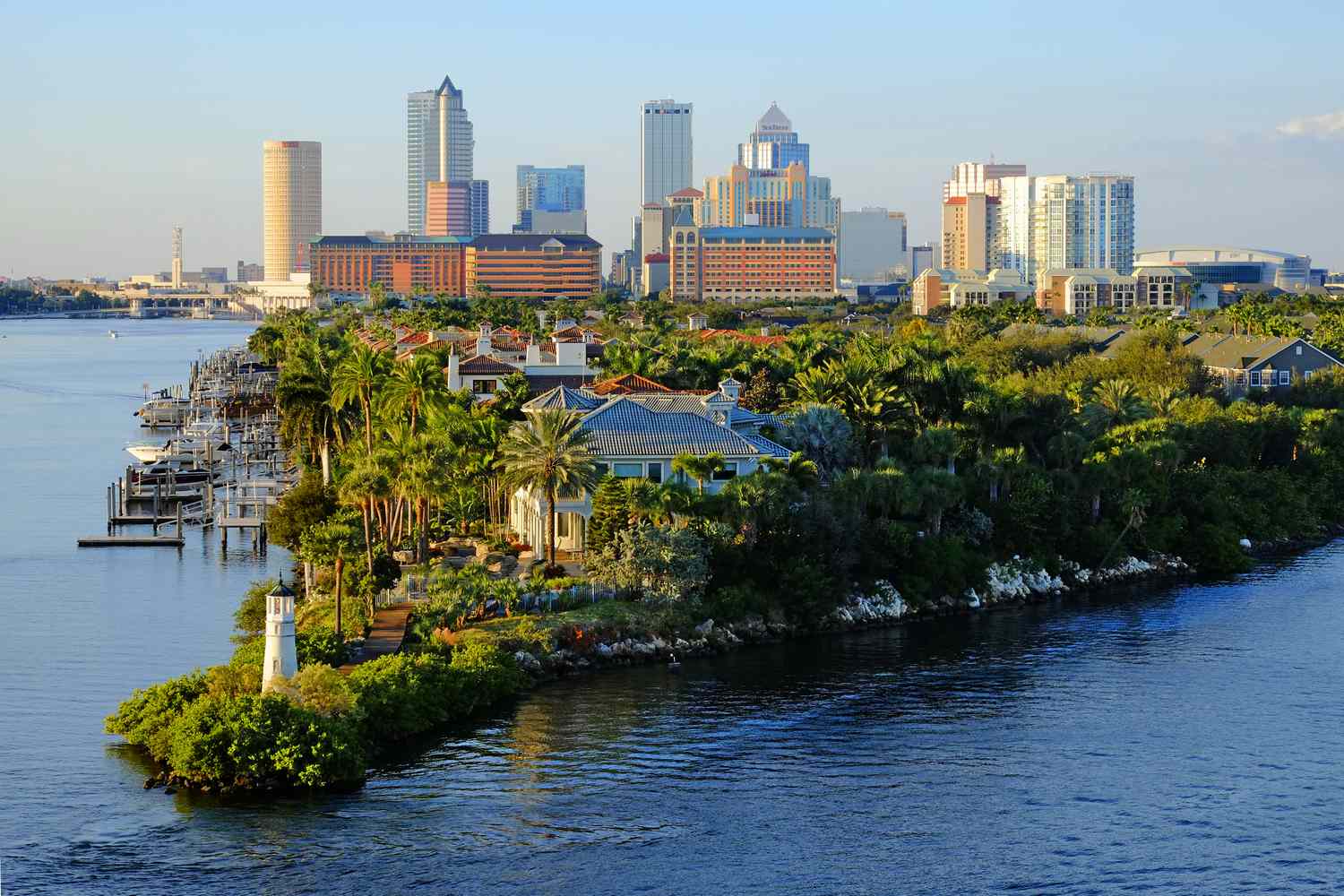Home>Weather and Climate>South Carolina Monthly Average Temperatures


Weather and Climate
South Carolina Monthly Average Temperatures
Published: March 1, 2024
Discover the monthly average temperatures in South Carolina and gain insights into the region's weather and climate. Plan your visit with confidence.
(Many of the links in this article redirect to a specific reviewed product. Your purchase of these products through affiliate links helps to generate commission for Temperatures.com, at no extra cost. Learn more)
Table of Contents
- Introduction
- Climate in South Carolina
- Factors Affecting Monthly Temperatures
- January Average Temperature
- February Average Temperature
- March Average Temperature
- April Average Temperature
- May Average Temperature
- June Average Temperature
- July Average Temperature
- August Average Temperature
- September Average Temperature
- October Average Temperature
- November Average Temperature
- December Average Temperature
- Conclusion
Introduction
South Carolina, a state renowned for its rich history, stunning coastal landscapes, and vibrant culture, experiences a diverse and dynamic climate throughout the year. From the majestic Blue Ridge Mountains to the picturesque Atlantic coastline, the state's geography plays a pivotal role in shaping its weather patterns. Understanding the monthly average temperatures in South Carolina is essential for residents, tourists, and businesses alike, as it provides valuable insights into the seasonal variations and helps in planning various activities and events.
The climate in South Carolina is characterized by its subtropical and humid conditions, with distinct variations between the coastal regions and the inland areas. The state experiences hot and humid summers, mild winters, and ample rainfall throughout the year. These climatic features contribute to the unique charm and appeal of South Carolina, attracting visitors from across the globe to explore its natural wonders and historical landmarks.
Exploring the monthly average temperatures in South Carolina unveils the fascinating nuances of its climate, offering a glimpse into the ebb and flow of the seasons. From the brisk chill of winter to the balmy warmth of summer, each month brings its own distinct flavor, creating a tapestry of weather experiences for residents and visitors to savor. By delving into the intricacies of these temperature variations, one can gain a deeper appreciation for the rhythm of nature and the ever-changing canvas of South Carolina's climate.
As we embark on this journey through the monthly average temperatures in South Carolina, we will unravel the factors that influence these fluctuations, gaining a deeper understanding of the intricate interplay between geography, atmospheric conditions, and seasonal transitions. Join us as we delve into the heart of South Carolina's climate, exploring the monthly tapestry of temperatures that shapes life in this captivating state.
Read more: South Carolina Monthly Temperature Guide
Climate in South Carolina
South Carolina boasts a diverse and captivating climate that reflects the state's geographical intricacies and its proximity to the Atlantic Ocean. The climate in South Carolina is predominantly characterized as subtropical, with distinct variations between the coastal and inland regions. The state experiences hot and humid summers, mild winters, and ample rainfall throughout the year, shaping the fabric of life for its residents and visitors.
The coastal areas of South Carolina are influenced by the Atlantic Ocean, which moderates temperatures and contributes to the region's relatively milder climate. The proximity to the ocean also infuses the coastal regions with higher humidity levels, creating a distinct subtropical environment. In contrast, the inland areas, particularly the northwest region near the Blue Ridge Mountains, exhibit a more temperate climate with cooler temperatures, especially during the winter months.
The state's climate is also influenced by the interaction of various air masses, including maritime tropical air from the Gulf of Mexico and the Atlantic Ocean, as well as continental polar air from the north. These dynamic air masses contribute to the seasonal variations in temperature and precipitation, shaping the overall climate of South Carolina.
South Carolina experiences a significant amount of rainfall throughout the year, with the coastal areas receiving higher average annual precipitation compared to the inland regions. The state is also susceptible to tropical cyclones, particularly during the Atlantic hurricane season, which runs from June to November. These tropical storms can bring heavy rainfall, strong winds, and storm surges, impacting the state's climate patterns and contributing to seasonal fluctuations.
The diverse topography of South Carolina, encompassing coastal plains, rolling hills, and the majestic Blue Ridge Mountains, further influences the state's climate. The elevation variations contribute to temperature differentials, with cooler temperatures prevalent in the mountainous regions compared to the coastal and low-lying areas.
Overall, the climate in South Carolina is a tapestry of subtropical influences, coastal dynamics, and geographical nuances, creating a captivating mosaic of weather patterns and seasonal transitions. Understanding the intricacies of South Carolina's climate provides valuable insights into the state's natural beauty, cultural heritage, and the rhythm of life that unfolds against the backdrop of its diverse and dynamic weather.
Factors Affecting Monthly Temperatures
The monthly temperatures in South Carolina are influenced by a myriad of factors that shape the climate and contribute to the seasonal variations experienced throughout the year. Understanding these influential elements provides valuable insights into the intricate interplay of natural forces that govern the state's weather patterns.
-
Geographical Location: South Carolina's geographical positioning plays a pivotal role in determining its monthly temperatures. The state's proximity to the Atlantic Ocean influences its coastal regions, moderating temperatures and infusing the area with higher humidity levels. In contrast, the inland areas, particularly those near the Blue Ridge Mountains, experience cooler temperatures due to elevation differentials and the absence of maritime influences.
-
Air Mass Interactions: The interaction of various air masses, including maritime tropical air from the Gulf of Mexico and the Atlantic Ocean, as well as continental polar air from the north, contributes to the seasonal variations in temperature. The collision and convergence of these air masses result in dynamic weather patterns, influencing the monthly temperatures experienced across South Carolina.
-
Topographical Variances: The diverse topography of South Carolina, encompassing coastal plains, rolling hills, and mountainous terrain, significantly impacts monthly temperatures. Elevation differentials contribute to temperature variations, with cooler temperatures prevalent in the mountainous regions compared to the coastal and low-lying areas. This topographical diversity creates distinct microclimates, further shaping the monthly temperature fluctuations.
-
Oceanic Influences: The Atlantic Ocean exerts a profound influence on the climate of South Carolina, particularly along its coastal regions. The ocean's proximity moderates temperatures, resulting in milder conditions compared to the inland areas. Additionally, the ocean contributes to higher humidity levels, impacting the overall climate and monthly temperature averages.
-
Seasonal Transitions: The transition between seasons, such as the shift from winter to spring and from summer to fall, significantly impacts monthly temperatures. These seasonal transitions bring about changes in atmospheric conditions, daylight duration, and solar radiation, influencing the temperature variations experienced throughout the year.
-
Tropical Cyclones: South Carolina's climate is susceptible to tropical cyclones, particularly during the Atlantic hurricane season. The impact of tropical storms, including heavy rainfall, strong winds, and storm surges, can significantly influence monthly temperatures, especially during the peak hurricane season from June to November.
By considering these influential factors, one can gain a deeper appreciation for the intricate dynamics that govern the monthly temperatures in South Carolina. The convergence of geographical, atmospheric, and seasonal elements creates a rich tapestry of climate patterns, shaping the ebb and flow of temperatures throughout the year.
January Average Temperature
January heralds the onset of the new year, bringing with it a distinct shift in the climate of South Carolina. As the winter season unfolds, the average temperatures in January encapsulate the essence of seasonal transition, reflecting the interplay of atmospheric dynamics and geographical influences.
In the coastal regions of South Carolina, January witnesses relatively milder average temperatures compared to the inland areas. The moderating effect of the Atlantic Ocean tempers the winter chill, resulting in average temperatures ranging from the upper 30s to the mid-50s Fahrenheit. The coastal cities, including Charleston and Myrtle Beach, experience these milder temperatures, creating a more temperate climate compared to the inland regions.
Conversely, the inland areas, particularly those near the Blue Ridge Mountains, encounter cooler average temperatures during January. The elevation differentials contribute to this variation, with average temperatures ranging from the mid-30s to the lower 50s Fahrenheit. The northwest region of South Carolina, characterized by its mountainous terrain, experiences these cooler temperatures, painting a wintry landscape against the backdrop of rolling hills and forested slopes.
The transition from December to January brings about a palpable shift in the weather patterns, marked by occasional cold fronts and the possibility of winter precipitation, including snow and sleet in the inland areas. The shorter daylight duration and reduced solar radiation contribute to the cooler average temperatures, creating a serene winter ambiance across the state.
January also sets the stage for occasional fluctuations in temperature, with brief periods of milder conditions interspersed with cooler spells. These variations add a touch of dynamism to the winter landscape, offering residents and visitors a diverse tapestry of weather experiences to savor.
As January unfolds, the average temperatures in South Carolina encapsulate the essence of winter, weaving a narrative of seasonal contrasts and natural rhythms. The interplay of coastal influences, elevation differentials, and atmospheric dynamics shapes the monthly temperature averages, creating a captivating tableau of winter weather that sets the stage for the months to come.
In summary, January in South Carolina unfolds as a transitional month, characterized by diverse average temperatures that reflect the state's geographical and climatic intricacies. The interplay of coastal dynamics, inland topography, and seasonal transitions creates a mosaic of winter temperatures, offering a glimpse into the ever-changing canvas of South Carolina's climate.
February Average Temperature
As February unfolds, South Carolina experiences a subtle yet perceptible shift in its climate, marking the gradual transition from winter to early spring. The average temperatures during this month encapsulate the delicate balance between lingering wintry influences and the nascent stirrings of springtime vitality, creating a captivating tapestry of weather patterns across the state.
In the coastal regions of South Carolina, February heralds a gradual moderation of temperatures, reflecting the influence of the Atlantic Ocean in mitigating the winter chill. The average temperatures in coastal cities such as Charleston and Myrtle Beach range from the mid-40s to the upper 50s Fahrenheit, signaling a gentle ascent from the cooler conditions of the previous month. The oceanic proximity infuses these coastal areas with a milder climate, setting the stage for the gradual emergence of springtime ambiance.
Conversely, the inland areas, particularly those near the Blue Ridge Mountains, continue to experience cooler average temperatures during February. The elevation differentials contribute to this variation, with average temperatures ranging from the lower 40s to the upper 50s Fahrenheit. The northwest region of South Carolina, characterized by its mountainous terrain, maintains its wintry landscape, offering residents and visitors a serene backdrop of rolling hills and forested slopes.
The transition from winter to early spring brings about subtle shifts in the weather patterns, marked by the gradual lengthening of daylight hours and the emergence of early blossoms and foliage. February sets the stage for the gradual awakening of nature, as the landscape begins to undergo a subtle transformation, heralding the imminent arrival of spring.
February also presents occasional fluctuations in temperature, with brief periods of milder conditions interspersed with cooler spells. These variations add a touch of dynamism to the late winter landscape, offering a diverse array of weather experiences for residents and visitors to savor.
As February unfolds, the average temperatures in South Carolina paint a nuanced portrait of seasonal transition, reflecting the state's geographical and climatic intricacies. The interplay of coastal influences, inland topography, and the gradual onset of springtime creates a mosaic of late winter temperatures, offering a glimpse into the ever-changing canvas of South Carolina's climate.
In summary, February in South Carolina unfolds as a month of transition, characterized by diverse average temperatures that mirror the delicate balance between winter's embrace and the burgeoning promise of spring. The interplay of coastal dynamics, inland topography, and the gradual emergence of early spring sets the stage for a captivating tableau of late winter weather, shaping the natural rhythms of the state.
Read more: Monthly Temperature Guide for South Africa
March Average Temperature
March ushers in a transformative period in South Carolina's climate, as the state undergoes a remarkable transition from late winter to early spring. The average temperatures during this pivotal month encapsulate the dynamic interplay of seasonal influences, geographical nuances, and the gradual awakening of nature, painting a vivid portrait of the state's ever-changing climate.
In the coastal regions of South Carolina, March heralds a notable shift towards milder and more temperate conditions, reflecting the moderating influence of the Atlantic Ocean. The average temperatures in coastal cities such as Charleston and Myrtle Beach range from the upper 40s to the lower 60s Fahrenheit, signaling a palpable departure from the cooler temperatures of the preceding months. The oceanic proximity infuses these coastal areas with a sense of burgeoning vitality, as nature begins to stir and the landscape undergoes a subtle transformation.
Conversely, the inland areas, particularly those near the Blue Ridge Mountains, experience a gradual ascent in temperatures during March. The elevation differentials contribute to this variation, with average temperatures ranging from the lower 40s to the upper 50s Fahrenheit. The northwest region of South Carolina, characterized by its mountainous terrain, witnesses the gradual emergence of springtime hues, as the wintry landscape gives way to the promise of new growth and vitality.
The transition from late winter to early spring brings about a palpable sense of renewal, marked by the lengthening of daylight hours and the emergence of blossoms and foliage across the state. March sets the stage for the gradual awakening of nature, as South Carolina's diverse landscapes come alive with the vibrant colors of early spring. The state's renowned azaleas begin to bloom, painting the coastal plains with a kaleidoscope of hues, while the mountainous regions showcase the delicate beauty of wildflowers and budding foliage.
March also presents occasional fluctuations in temperature, with brief periods of milder conditions interspersed with cooler spells. These variations add a touch of dynamism to the early spring landscape, offering residents and visitors a diverse array of weather experiences to savor. The state's parks and natural reserves become havens for outdoor enthusiasts, as hiking trails and scenic overlooks beckon with the promise of captivating vistas and the sights and sounds of nature's awakening.
As March unfolds, the average temperatures in South Carolina weave a captivating narrative of seasonal transition, reflecting the state's geographical and climatic intricacies. The interplay of coastal influences, inland topography, and the gradual onset of springtime creates a mosaic of early spring temperatures, offering a glimpse into the ever-changing canvas of South Carolina's climate.
In summary, March in South Carolina unfolds as a month of remarkable transformation, characterized by diverse average temperatures that mirror the state's transition from late winter to early spring. The interplay of coastal dynamics, inland topography, and the vibrant emergence of early spring sets the stage for a captivating tableau of seasonal weather, shaping the natural rhythms of the state.
April Average Temperature
April heralds a remarkable transition in South Carolina's climate, marking the definitive arrival of spring and the emergence of vibrant, balmy conditions across the state. The average temperatures during this pivotal month encapsulate the dynamic interplay of seasonal influences, geographical nuances, and the palpable transformation of the natural landscape.
In the coastal regions of South Carolina, April signifies a notable shift towards warmer and more inviting conditions, reflecting the moderating influence of the Atlantic Ocean. The average temperatures in coastal cities such as Charleston and Myrtle Beach range from the mid-50s to the upper 70s Fahrenheit, signaling a palpable departure from the cooler temperatures of the preceding months. The oceanic proximity infuses these coastal areas with a sense of burgeoning vitality, as nature bursts into full bloom, and the landscape undergoes a remarkable transformation.
Conversely, the inland areas, particularly those near the Blue Ridge Mountains, experience a gradual ascent in temperatures during April. The elevation differentials contribute to this variation, with average temperatures ranging from the upper 40s to the lower 60s Fahrenheit. The northwest region of South Carolina, characterized by its mountainous terrain, witnesses the vibrant emergence of springtime hues, as the wintry landscape gives way to the promise of new growth and vitality.
The transition from early spring to the cusp of summer brings about a palpable sense of renewal, marked by the lush greenery and the vibrant colors adorning the state's diverse landscapes. April sets the stage for the full bloom of South Carolina's renowned azaleas, painting the coastal plains with a breathtaking tapestry of hues, while the mountainous regions showcase the delicate beauty of wildflowers and budding foliage.
April also presents occasional fluctuations in temperature, with brief periods of milder conditions interspersed with warmer spells. These variations add a touch of dynamism to the springtime landscape, offering residents and visitors a diverse array of weather experiences to savor. The state's parks and natural reserves become havens for outdoor enthusiasts, as hiking trails and scenic overlooks beckon with the promise of captivating vistas and the sights and sounds of nature's awakening.
As April unfolds, the average temperatures in South Carolina weave a captivating narrative of seasonal transition, reflecting the state's geographical and climatic intricacies. The interplay of coastal influences, inland topography, and the vibrant emergence of springtime creates a mosaic of early spring temperatures, offering a glimpse into the ever-changing canvas of South Carolina's climate.
In summary, April in South Carolina unfolds as a month of remarkable transformation, characterized by diverse average temperatures that mirror the state's transition from early spring to the cusp of summer. The interplay of coastal dynamics, inland topography, and the vibrant emergence of spring sets the stage for a captivating tableau of seasonal weather, shaping the natural rhythms of the state.
May Average Temperature
May heralds the arrival of balmy, sun-kissed days and the vibrant embrace of early summer across South Carolina. The average temperatures during this pivotal month encapsulate the dynamic interplay of seasonal influences, geographical nuances, and the palpable transformation of the natural landscape.
In the coastal regions of South Carolina, May signifies a notable shift towards warmer and more inviting conditions, reflecting the moderating influence of the Atlantic Ocean. The average temperatures in coastal cities such as Charleston and Myrtle Beach range from the upper 60s to the lower 80s Fahrenheit, signaling a palpable departure from the milder temperatures of the preceding months. The oceanic proximity infuses these coastal areas with a sense of burgeoning vitality, as nature bursts into full bloom, and the landscape undergoes a remarkable transformation.
Conversely, the inland areas, particularly those near the Blue Ridge Mountains, experience a gradual ascent in temperatures during May. The elevation differentials contribute to this variation, with average temperatures ranging from the lower 60s to the upper 70s Fahrenheit. The northwest region of South Carolina, characterized by its mountainous terrain, witnesses the vibrant emergence of early summer hues, as the landscape becomes adorned with lush greenery and the promise of new growth and vitality.
The transition from spring to the threshold of summer brings about a palpable sense of renewal, marked by the lush greenery and the vibrant colors adorning the state's diverse landscapes. May sets the stage for the full bloom of South Carolina's renowned azaleas, painting the coastal plains with a breathtaking tapestry of hues, while the mountainous regions showcase the delicate beauty of wildflowers and budding foliage.
May also presents occasional fluctuations in temperature, with brief periods of warmer conditions interspersed with cooler spells. These variations add a touch of dynamism to the early summer landscape, offering residents and visitors a diverse array of weather experiences to savor. The state's parks and natural reserves become havens for outdoor enthusiasts, as hiking trails and scenic overlooks beckon with the promise of captivating vistas and the sights and sounds of nature's awakening.
As May unfolds, the average temperatures in South Carolina weave a captivating narrative of seasonal transition, reflecting the state's geographical and climatic intricacies. The interplay of coastal influences, inland topography, and the vibrant emergence of early summer creates a mosaic of temperatures, offering a glimpse into the ever-changing canvas of South Carolina's climate.
In summary, May in South Carolina unfolds as a month of remarkable transformation, characterized by diverse average temperatures that mirror the state's transition from spring to the threshold of summer. The interplay of coastal dynamics, inland topography, and the vibrant emergence of early summer sets the stage for a captivating tableau of seasonal weather, shaping the natural rhythms of the state.
June Average Temperature
June heralds the arrival of the quintessential summer ambiance in South Carolina, as the state basks in the warmth of the sun and the vibrant energy of the season. The average temperatures during this pivotal month encapsulate the dynamic transition from late spring to the full-fledged embrace of summer, painting a vivid portrait of the state's ever-changing climate.
In the coastal regions of South Carolina, June signifies a notable shift towards warmer and more inviting conditions, reflecting the moderating influence of the Atlantic Ocean. The average temperatures in coastal cities such as Charleston and Myrtle Beach range from the mid-70s to the upper 80s Fahrenheit, signaling a palpable departure from the mild temperatures of the preceding months. The oceanic proximity infuses these coastal areas with a sense of burgeoning vitality, as nature bursts into full bloom, and the landscape undergoes a remarkable transformation.
Conversely, the inland areas, particularly those near the Blue Ridge Mountains, experience a gradual ascent in temperatures during June. The elevation differentials contribute to this variation, with average temperatures ranging from the upper 60s to the lower 80s Fahrenheit. The northwest region of South Carolina, characterized by its mountainous terrain, witnesses the vibrant emergence of early summer hues, as the landscape becomes adorned with lush greenery and the promise of new growth and vitality.
The transition from late spring to the full-fledged embrace of summer brings about a palpable sense of renewal, marked by the lush greenery and the vibrant colors adorning the state's diverse landscapes. June sets the stage for the full bloom of South Carolina's renowned flora, painting the coastal plains with a breathtaking tapestry of hues, while the mountainous regions showcase the delicate beauty of wildflowers and budding foliage.
June also presents occasional fluctuations in temperature, with brief periods of warmer conditions interspersed with cooler spells. These variations add a touch of dynamism to the early summer landscape, offering residents and visitors a diverse array of weather experiences to savor. The state's parks and natural reserves become havens for outdoor enthusiasts, as hiking trails and scenic overlooks beckon with the promise of captivating vistas and the sights and sounds of nature's awakening.
As June unfolds, the average temperatures in South Carolina weave a captivating narrative of seasonal transition, reflecting the state's geographical and climatic intricacies. The interplay of coastal influences, inland topography, and the vibrant emergence of summer creates a mosaic of temperatures, offering a glimpse into the ever-changing canvas of South Carolina's climate.
In summary, June in South Carolina unfolds as a month of remarkable transformation, characterized by diverse average temperatures that mirror the state's transition from late spring to the full-fledged embrace of summer. The interplay of coastal dynamics, inland topography, and the vibrant emergence of summer sets the stage for a captivating tableau of seasonal weather, shaping the natural rhythms of the state.
July Average Temperature
July, the epitome of summer's embrace, envelops South Carolina in a tapestry of warmth and vitality, as the state basks in the sun's radiant glow and the vibrant energy of the season. The average temperatures during this pivotal month encapsulate the dynamic transition from early to mid-summer, painting a vivid portrait of the state's ever-changing climate.
In the coastal regions of South Carolina, July signifies a notable shift towards warmer and more inviting conditions, reflecting the moderating influence of the Atlantic Ocean. The average temperatures in coastal cities such as Charleston and Myrtle Beach soar, ranging from the mid-70s to the lower 90s Fahrenheit, signaling a palpable departure from the mild temperatures of the preceding months. The oceanic proximity infuses these coastal areas with a sense of burgeoning vitality, as nature bursts into full bloom, and the landscape undergoes a remarkable transformation.
Conversely, the inland areas, particularly those near the Blue Ridge Mountains, experience a gradual ascent in temperatures during July. The elevation differentials contribute to this variation, with average temperatures ranging from the upper 60s to the lower 80s Fahrenheit. The northwest region of South Carolina, characterized by its mountainous terrain, witnesses the vibrant emergence of mid-summer hues, as the landscape becomes adorned with lush greenery and the promise of new growth and vitality.
The transition from early to mid-summer brings about a palpable sense of renewal, marked by the lush greenery and the vibrant colors adorning the state's diverse landscapes. July sets the stage for the full bloom of South Carolina's renowned flora, painting the coastal plains with a breathtaking tapestry of hues, while the mountainous regions showcase the delicate beauty of wildflowers and budding foliage.
July also presents occasional fluctuations in temperature, with brief periods of warmer conditions interspersed with cooler spells. These variations add a touch of dynamism to the mid-summer landscape, offering residents and visitors a diverse array of weather experiences to savor. The state's parks and natural reserves become havens for outdoor enthusiasts, as hiking trails and scenic overlooks beckon with the promise of captivating vistas and the sights and sounds of nature's awakening.
As July unfolds, the average temperatures in South Carolina weave a captivating narrative of seasonal transition, reflecting the state's geographical and climatic intricacies. The interplay of coastal influences, inland topography, and the vibrant emergence of mid-summer creates a mosaic of temperatures, offering a glimpse into the ever-changing canvas of South Carolina's climate.
In summary, July in South Carolina unfolds as a month of remarkable transformation, characterized by diverse average temperatures that mirror the state's transition from early to mid-summer. The interplay of coastal dynamics, inland topography, and the vibrant emergence of mid-summer sets the stage for a captivating tableau of seasonal weather, shaping the natural rhythms of the state.
August Average Temperature
August heralds the peak of summer in South Carolina, embracing the state in a blanket of warmth and sunshine. The average temperatures during this pivotal month encapsulate the dynamic transition to the height of summer, painting a vivid portrait of the state's ever-changing climate.
In the coastal regions of South Carolina, August signifies a notable shift towards warmer and more inviting conditions, reflecting the moderating influence of the Atlantic Ocean. The average temperatures in coastal cities such as Charleston and Myrtle Beach soar, ranging from the mid-70s to the lower 90s Fahrenheit, signaling a palpable departure from the milder temperatures of the preceding months. The oceanic proximity infuses these coastal areas with a sense of burgeoning vitality, as nature bursts into full bloom, and the landscape undergoes a remarkable transformation.
Conversely, the inland areas, particularly those near the Blue Ridge Mountains, experience a gradual ascent in temperatures during August. The elevation differentials contribute to this variation, with average temperatures ranging from the upper 60s to the lower 80s Fahrenheit. The northwest region of South Carolina, characterized by its mountainous terrain, witnesses the vibrant embrace of late summer, as the landscape becomes adorned with lush greenery and the promise of new growth and vitality.
The transition to the peak of summer brings about a palpable sense of vibrancy, marked by the lush greenery and the vibrant colors adorning the state's diverse landscapes. August sets the stage for the full bloom of South Carolina's renowned flora, painting the coastal plains with a breathtaking tapestry of hues, while the mountainous regions showcase the delicate beauty of wildflowers and budding foliage.
August also presents occasional fluctuations in temperature, with brief periods of warmer conditions interspersed with cooler spells. These variations add a touch of dynamism to the late summer landscape, offering residents and visitors a diverse array of weather experiences to savor. The state's parks and natural reserves become havens for outdoor enthusiasts, as hiking trails and scenic overlooks beckon with the promise of captivating vistas and the sights and sounds of nature's awakening.
As August unfolds, the average temperatures in South Carolina weave a captivating narrative of seasonal transition, reflecting the state's geographical and climatic intricacies. The interplay of coastal influences, inland topography, and the vibrant embrace of late summer creates a mosaic of temperatures, offering a glimpse into the ever-changing canvas of South Carolina's climate.
In summary, August in South Carolina unfolds as a month of remarkable transformation, characterized by diverse average temperatures that mirror the state's transition to the peak of summer. The interplay of coastal dynamics, inland topography, and the vibrant embrace of late summer sets the stage for a captivating tableau of seasonal weather, shaping the natural rhythms of the state.
September Average Temperature
September marks a significant transition in South Carolina's climate, signaling the gradual shift from the peak of summer to the onset of early autumn. The average temperatures during this pivotal month encapsulate the dynamic interplay of seasonal influences, geographical nuances, and the palpable transformation of the natural landscape.
In the coastal regions of South Carolina, September signifies a notable departure from the peak of summer, as the moderating influence of the Atlantic Ocean begins to manifest in the average temperatures. Coastal cities such as Charleston and Myrtle Beach experience a gradual decline in temperatures, with average readings ranging from the mid-70s to the lower 80s Fahrenheit. The oceanic proximity continues to infuse these coastal areas with a sense of lingering warmth, creating an inviting ambiance as the transition to autumn unfolds.
Conversely, the inland areas, particularly those near the Blue Ridge Mountains, witness a gradual descent in temperatures during September. The elevation differentials contribute to this variation, with average temperatures ranging from the mid-60s to the lower 70s Fahrenheit. The northwest region of South Carolina, characterized by its mountainous terrain, undergoes a subtle transformation as the landscape embraces the early hints of autumn, with the promise of vibrant foliage and a gentle shift in the natural palette.
The transition from late summer to early autumn brings about a palpable sense of change, marked by the gradual cooling of temperatures and the subtle transformation of the state's diverse landscapes. September sets the stage for the emergence of autumnal hues, as the first tinges of red, gold, and amber begin to grace the foliage, particularly in the mountainous regions. The state's parks and natural reserves become havens for outdoor enthusiasts, as hiking trails and scenic overlooks beckon with the promise of captivating vistas and the sights and sounds of nature's transition.
September also presents occasional fluctuations in temperature, with brief periods of warmth interspersed with cooler spells. These variations add a touch of dynamism to the early autumn landscape, offering residents and visitors a diverse array of weather experiences to savor. The state's natural beauty takes on a new allure, as the changing temperatures herald the promise of autumnal splendor and the timeless rhythms of nature's cycle.
As September unfolds, the average temperatures in South Carolina weave a captivating narrative of seasonal transition, reflecting the state's geographical and climatic intricacies. The interplay of coastal influences, inland topography, and the gradual onset of autumn creates a mosaic of temperatures, offering a glimpse into the ever-changing canvas of South Carolina's climate.
In summary, September in South Carolina unfolds as a month of remarkable transition, characterized by diverse average temperatures that mirror the state's shift from late summer to early autumn. The interplay of coastal dynamics, inland topography, and the emergence of autumnal hues sets the stage for a captivating tableau of seasonal weather, shaping the natural rhythms of the state.
October Average Temperature
October ushers in a captivating transformation in South Carolina's climate, as the state transitions from the lingering warmth of late summer to the enchanting embrace of early autumn. The average temperatures during this pivotal month encapsulate the dynamic interplay of seasonal influences, geographical nuances, and the palpable transformation of the natural landscape.
In the coastal regions of South Carolina, October signifies a notable departure from the lingering warmth of summer, as the moderating influence of the Atlantic Ocean begins to manifest in the average temperatures. Coastal cities such as Charleston and Myrtle Beach experience a gradual decline in temperatures, with average readings ranging from the mid-60s to the lower 70s Fahrenheit. The oceanic proximity continues to infuse these coastal areas with a sense of lingering warmth, creating an inviting ambiance as the transition to autumn unfolds.
Conversely, the inland areas, particularly those near the Blue Ridge Mountains, witness a more pronounced descent in temperatures during October. The elevation differentials contribute to this variation, with average temperatures ranging from the lower 50s to the mid-60s Fahrenheit. The northwest region of South Carolina, characterized by its mountainous terrain, undergoes a remarkable transformation as the landscape embraces the vibrant hues of autumn, with the promise of resplendent foliage and a gentle shift in the natural palette.
The transition from late summer to early autumn brings about a palpable sense of change, marked by the gradual cooling of temperatures and the subtle transformation of the state's diverse landscapes. October sets the stage for the emergence of autumnal hues, as the foliage begins to adorn the countryside with a breathtaking array of reds, oranges, and yellows, particularly in the mountainous regions. The state's parks and natural reserves become havens for outdoor enthusiasts, as hiking trails and scenic overlooks beckon with the promise of captivating vistas and the sights and sounds of nature's transition.
October also presents occasional fluctuations in temperature, with brief periods of warmth interspersed with cooler spells. These variations add a touch of dynamism to the early autumn landscape, offering residents and visitors a diverse array of weather experiences to savor. The state's natural beauty takes on a new allure, as the changing temperatures herald the promise of autumnal splendor and the timeless rhythms of nature's cycle.
As October unfolds, the average temperatures in South Carolina weave a captivating narrative of seasonal transition, reflecting the state's geographical and climatic intricacies. The interplay of coastal influences, inland topography, and the gradual onset of autumn creates a mosaic of temperatures, offering a glimpse into the ever-changing canvas of South Carolina's climate.
In summary, October in South Carolina unfolds as a month of remarkable transition, characterized by diverse average temperatures that mirror the state's shift from late summer to early autumn. The interplay of coastal dynamics, inland topography, and the emergence of autumnal hues sets the stage for a captivating tableau of seasonal weather, shaping the natural rhythms of the state.
November Average Temperature
November brings a noticeable shift in South Carolina's climate as the state transitions from the vibrant hues of autumn to the subtle embrace of early winter. The average temperatures during this pivotal month encapsulate the dynamic interplay of seasonal influences, geographical nuances, and the palpable transformation of the natural landscape.
In the coastal regions of South Carolina, November signifies a gradual departure from the lingering warmth of autumn, as the moderating influence of the Atlantic Ocean begins to manifest in the average temperatures. Coastal cities such as Charleston and Myrtle Beach experience a discernible decline in temperatures, with average readings ranging from the mid-50s to the lower 60s Fahrenheit. The oceanic proximity continues to infuse these coastal areas with a sense of lingering warmth, creating an inviting ambiance as the transition to winter unfolds.
Conversely, the inland areas, particularly those near the Blue Ridge Mountains, witness a more pronounced descent in temperatures during November. The elevation differentials contribute to this variation, with average temperatures ranging from the lower 40s to the mid-50s Fahrenheit. The northwest region of South Carolina, characterized by its mountainous terrain, undergoes a remarkable transformation as the landscape embraces the subtle transition to winter, with the promise of a more serene and contemplative natural palette.
The transition from autumn to early winter brings about a palpable sense of change, marked by the gradual cooling of temperatures and the subtle transformation of the state's diverse landscapes. November sets the stage for the emergence of wintry hues, as the foliage begins to take on a more subdued demeanor, particularly in the mountainous regions. The state's parks and natural reserves become havens for outdoor enthusiasts, as hiking trails and scenic overlooks beckon with the promise of captivating vistas and the sights and sounds of nature's transition.
November also presents occasional fluctuations in temperature, with brief periods of cooler conditions interspersed with milder spells. These variations add a touch of dynamism to the early winter landscape, offering residents and visitors a diverse array of weather experiences to savor. The state's natural beauty takes on a new allure, as the changing temperatures herald the promise of a serene and contemplative winter season and the timeless rhythms of nature's cycle.
As November unfolds, the average temperatures in South Carolina weave a captivating narrative of seasonal transition, reflecting the state's geographical and climatic intricacies. The interplay of coastal influences, inland topography, and the gradual onset of winter creates a mosaic of temperatures, offering a glimpse into the ever-changing canvas of South Carolina's climate.
December Average Temperature
December brings a transformative shift in South Carolina's climate as the state embraces the onset of winter. The average temperatures during this pivotal month encapsulate the dynamic interplay of seasonal influences, geographical nuances, and the palpable transformation of the natural landscape.
In the coastal regions of South Carolina, December signifies a notable departure from the lingering warmth of autumn, as the moderating influence of the Atlantic Ocean begins to manifest in the average temperatures. Coastal cities such as Charleston and Myrtle Beach experience a discernible decline in temperatures, with average readings ranging from the lower 40s to the mid-50s Fahrenheit. The oceanic proximity continues to infuse these coastal areas with a sense of lingering warmth, creating an inviting ambiance as the transition to winter unfolds.
Conversely, the inland areas, particularly those near the Blue Ridge Mountains, witness a more pronounced descent in temperatures during December. The elevation differentials contribute to this variation, with average temperatures ranging from the lower 30s to the lower 40s Fahrenheit. The northwest region of South Carolina, characterized by its mountainous terrain, undergoes a remarkable transformation as the landscape embraces the serene transition to winter, with the promise of a more subdued and contemplative natural palette.
The transition from autumn to winter brings about a palpable sense of change, marked by the gradual cooling of temperatures and the subtle transformation of the state's diverse landscapes. December sets the stage for the emergence of wintry hues, as the foliage takes on a more subdued demeanor, particularly in the mountainous regions. The state's parks and natural reserves become havens for outdoor enthusiasts, as hiking trails and scenic overlooks beckon with the promise of captivating vistas and the sights and sounds of nature's transition.
December also presents occasional fluctuations in temperature, with brief periods of cooler conditions interspersed with milder spells. These variations add a touch of dynamism to the early winter landscape, offering residents and visitors a diverse array of weather experiences to savor. The state's natural beauty takes on a new allure, as the changing temperatures herald the promise of a serene and contemplative winter season and the timeless rhythms of nature's cycle.
As December unfolds, the average temperatures in South Carolina weave a captivating narrative of seasonal transition, reflecting the state's geographical and climatic intricacies. The interplay of coastal influences, inland topography, and the gradual onset of winter creates a mosaic of temperatures, offering a glimpse into the ever-changing canvas of South Carolina's climate.
Conclusion
The monthly average temperatures in South Carolina offer a captivating journey through the state's diverse and dynamic climate. From the gentle embrace of early spring to the vibrant energy of summer and the serene transition to winter, each month paints a unique portrait of seasonal transitions and natural rhythms.
The coastal regions, influenced by the tempering effects of the Atlantic Ocean, exhibit milder temperatures compared to the inland areas, particularly those near the Blue Ridge Mountains. This geographical diversity creates a tapestry of climate patterns, shaping the ebb and flow of temperatures throughout the year.
The interplay of coastal dynamics, inland topography, and seasonal transitions infuses South Carolina's climate with a rich tapestry of weather experiences. The state's renowned flora, including the vibrant azaleas and the delicate wildflowers, adds a touch of natural splendor to the seasonal transitions, creating a captivating backdrop for residents and visitors to savor.
As the months unfold, South Carolina's climate reveals the intricate interplay of geographical influences, atmospheric dynamics, and the timeless rhythms of nature. The transition from winter to spring brings about a palpable shift in the weather patterns, marked by the emergence of blossoms and foliage, while the shift from summer to autumn paints the landscape with a breathtaking array of reds, oranges, and yellows.
The state's parks and natural reserves become havens for outdoor enthusiasts, offering captivating vistas and the sights and sounds of nature's awakening. Whether it's the vibrant hues of early spring, the balmy warmth of summer, or the serene embrace of winter, South Carolina's climate offers a diverse and captivating tapestry of weather experiences.
Understanding the monthly average temperatures in South Carolina provides valuable insights into the state's natural beauty, cultural heritage, and the rhythm of life that unfolds against the backdrop of its diverse and dynamic weather. It invites residents and visitors to immerse themselves in the ever-changing canvas of South Carolina's climate, where each month weaves a new chapter in the captivating story of the state's weather and natural splendor.












